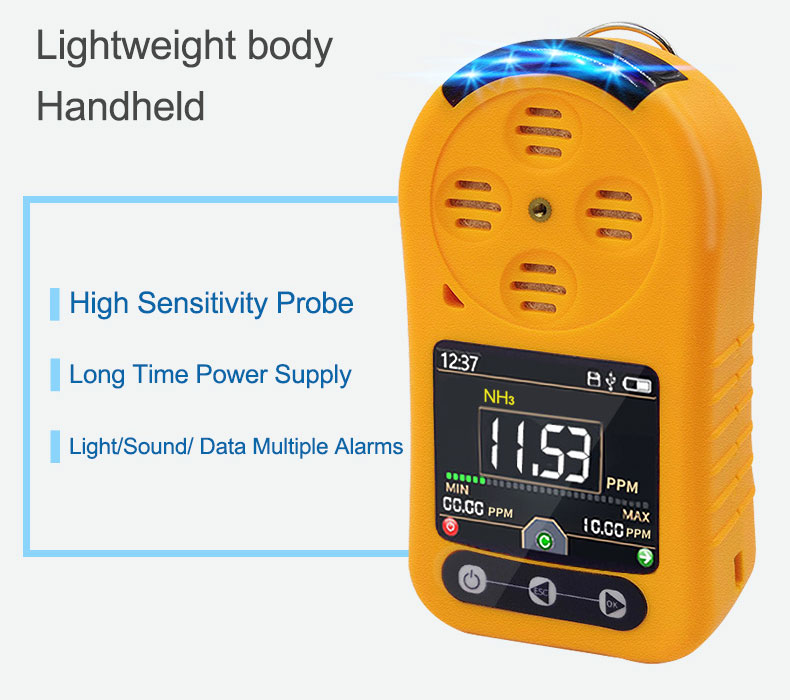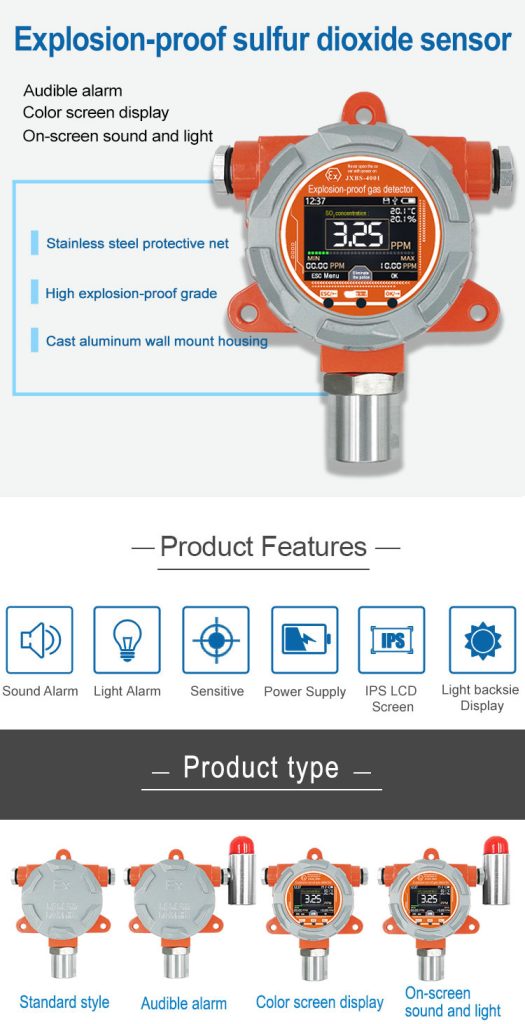Introduction
Environmental monitoring is a critical task that involves measuring, assessing, and interpreting the condition of the environment. It is crucial for understanding the impact of human activities on natural systems and for making informed decisions to protect the environment. One of the essential tools in environmental monitoring is a gas detector. This article explores the importance of gas detectors in environmental monitoring, their types, applications, and the challenges faced in their use.

Types of Gas Detectors
Gas detectors are devices designed to detect the presence and concentration of various gases in the atmosphere. They can be categorized into several types based on their sensing principles, detection range, and target gases.
Photoionization Detectors (PIDs)
Photoionization detectors work by exposing a sample gas to ultraviolet light, which ionizes the gas molecules. The resulting ions are then collected and measured to determine the gas concentration. PIDs are highly sensitive and can detect a wide range of volatile organic compounds (VOCs).
Chemical Sensors
Chemical sensors are devices that detect gases through chemical reactions. They typically use a chemical reagent that reacts with the target gas, producing a measurable change in electrical properties, color, or other physical properties. Chemical sensors are commonly used to detect gases such as carbon monoxide, sulfur dioxide, and nitrogen dioxide.
Infrared Gas Detectors
Infrared gas detectors measure the absorption of infrared radiation by gas molecules. They emit infrared light and measure the amount of light absorbed by the target gas. Infrared detectors are commonly used to detect gases such as methane, carbon dioxide, and ammonia.
Catalytic Bead Sensors
Catalytic bead sensors work by burning the target gas on a heated catalytic bead. The heat generated by the combustion reaction is measured and correlated to the gas concentration. Catalytic bead sensors are commonly used to detect combustible gases such as hydrogen, methane, and propane.
Electrochemical Sensors
Electrochemical sensors measure the electrical current produced by a chemical reaction between the target gas and an electrolyte. The current is proportional to the gas concentration. Electrochemical sensors are commonly used to detect gases such as oxygen, hydrogen sulfide, and chlorine.

Applications of Gas Detectors in Environmental Monitoring
Gas detectors play a crucial role in environmental monitoring, with various applications across different sectors.
Air Quality Monitoring
Air quality monitoring is one of the most critical applications of gas detectors. They are used to measure the concentration of pollutants such as particulate matter (PM), nitrogen dioxide (NO2), sulfur dioxide (SO2), and volatile organic compounds (VOCs) in the atmosphere. Air quality monitoring is essential for protecting public health and the environment, as these pollutants can cause respiratory problems, cardiovascular diseases, and other health issues.
Industrial Emissions Monitoring
Gas detectors are also used to monitor emissions from industrial processes. They measure the concentration of pollutants such as sulfur dioxide, nitrogen oxides, and carbon monoxide released into the atmosphere. Industrial emissions monitoring is crucial for ensuring compliance with environmental regulations and reducing the impact of industrial activities on the environment.
Greenhouse Gas Monitoring
Greenhouse gases, such as carbon dioxide and methane, are major contributors to global warming and climate change. Gas detectors are used to monitor the concentration of these gases in the atmosphere, providing valuable data for understanding their sources, sinks, and trends. Greenhouse gas monitoring is essential for developing effective policies to mitigate climate change.
Landfill Gas Monitoring
Landfill gas monitoring involves measuring the concentration of methane and other gases emitted from landfills. Methane is a potent greenhouse gas with a significant impact on climate change. Gas detectors are used to detect and measure methane emissions from landfills, enabling operators to take measures to capture and utilize the gas, reducing its environmental impact.
Emergency Response
Gas detectors are also crucial in emergency response situations, such as chemical spills, fires, and explosions. They provide real-time data on the concentration and type of gases present, enabling responders to make informed decisions and take appropriate actions to protect public health and safety.
Challenges in Using Gas Detectors
Despite their importance, using gas detectors in environmental monitoring faces several challenges.
Cost
Gas detectors can be expensive, especially high-end models with advanced features and capabilities. The cost can be a significant barrier to widespread adoption, especially in developing countries with limited resources.
Calibration and Maintenance
Gas detectors require regular calibration and maintenance to ensure accurate and reliable readings. Calibration involves exposing the detector to a known concentration of the target gas and adjusting its settings to match the measured concentration. Maintenance involves cleaning the detector and replacing worn-out parts. Inadequate calibration and maintenance can lead to inaccurate readings and false alarms, compromising the effectiveness of the gas detector.
Interference
Gas detectors can be susceptible to interference from other gases, environmental conditions, and electronic noise. Interference can lead to false readings and false alarms, reducing the reliability of the gas detector.
Data Management
Gas detectors generate a large amount of data, which can be challenging to manage and analyze. Effective data management requires robust data storage, processing, and analysis capabilities, as well as trained personnel to interpret the data and make informed decisions.
Conclusion
Gas detectors are essential tools in environmental monitoring, playing a crucial role in protecting public health and the environment. They are used in various applications, including air quality monitoring, industrial emissions monitoring, greenhouse gas monitoring, landfill gas monitoring, and emergency response. Despite their importance, using gas detectors faces several challenges, including cost, calibration and maintenance, interference, and data management. Addressing these challenges is crucial for ensuring the effectiveness of gas detectors in environmental monitoring and promoting sustainable development.
To overcome these challenges, stakeholders in the environmental monitoring sector should consider the following strategies:
- Promote Innovation and Development: Encourage research and development of new gas detector technologies with improved accuracy, reliability, and cost-effectiveness. Support startups and small businesses in the gas detection industry to bring innovative solutions to market.
- Enhance Calibration and Maintenance Services: Establish robust calibration and maintenance services to ensure the accuracy and reliability of gas detectors. Provide training and technical support to users to help them understand the importance of calibration and maintenance and how to perform them correctly.
- Improve Data Management Capabilities: Invest in data storage, processing, and analysis capabilities to manage and analyze the large amounts of data generated by gas detectors. Develop user-friendly data visualization tools to help users interpret the data and make informed decisions.
- Promote Collaboration and Information Sharing: Encourage collaboration and information sharing among stakeholders in the environmental monitoring sector, including government agencies, research institutions, and private companies. This can help to address common challenges, share best practices, and promote the widespread adoption of gas detectors.
- Raise Public Awareness: Educate the public about the importance of environmental monitoring and the role of gas detectors in protecting public health and the environment. Raise awareness about the potential risks of inaccurate or unreliable gas detector readings and the importance of regular calibration and maintenance.
By addressing these challenges and implementing these strategies, stakeholders in the environmental monitoring sector can ensure the effectiveness of gas detectors in protecting public health and the environment, promoting sustainable development, and achieving a healthier and safer world for future generations.